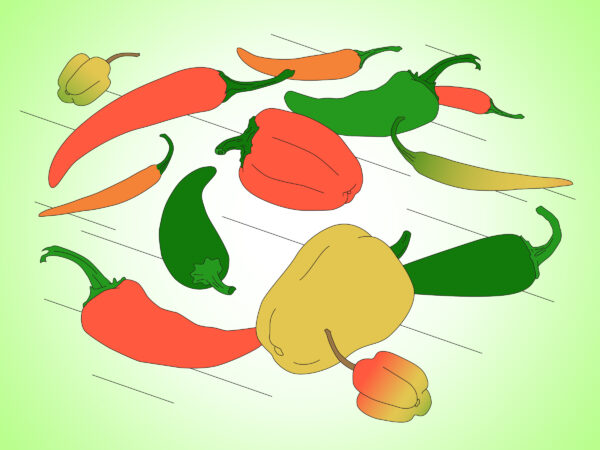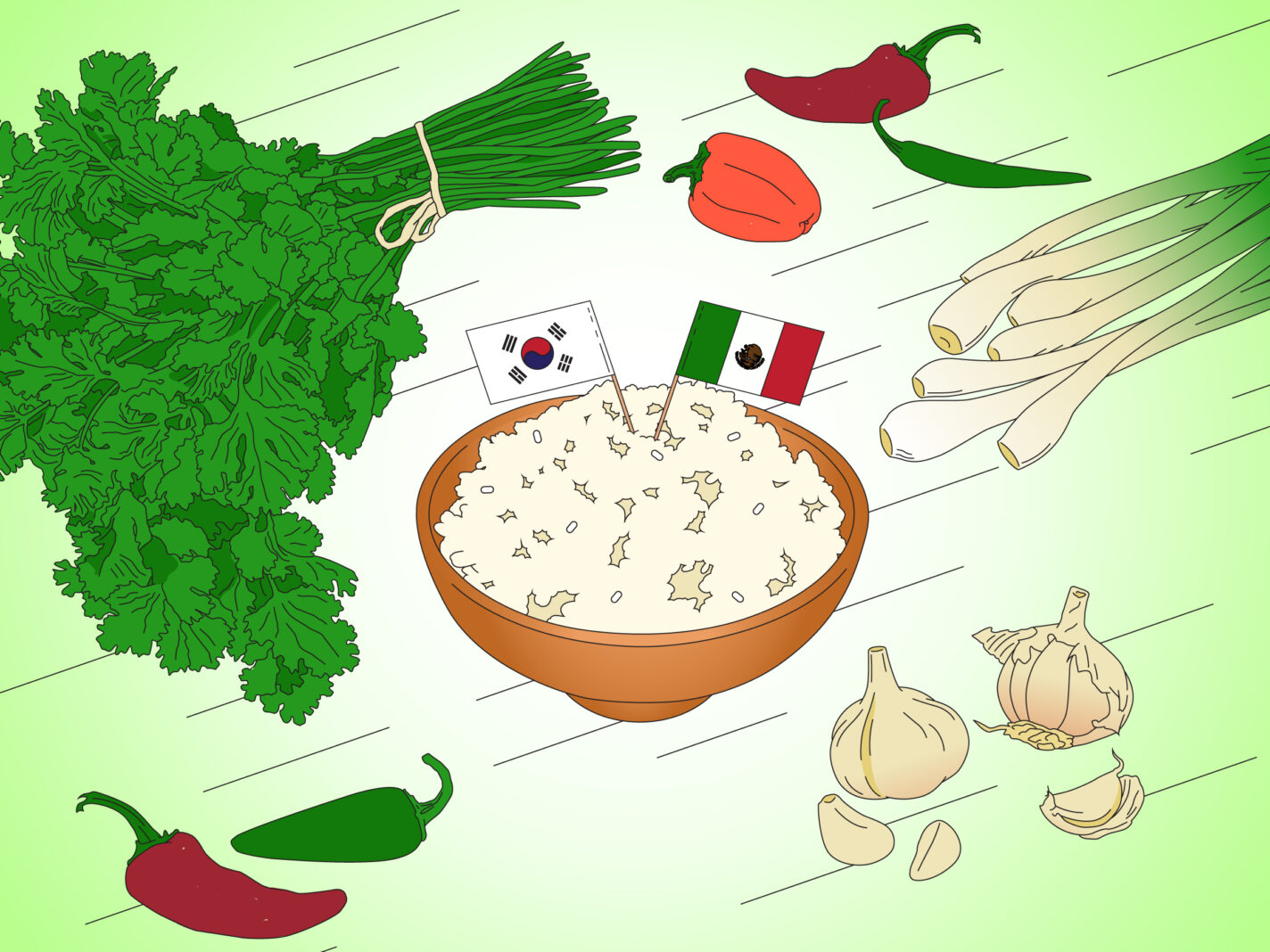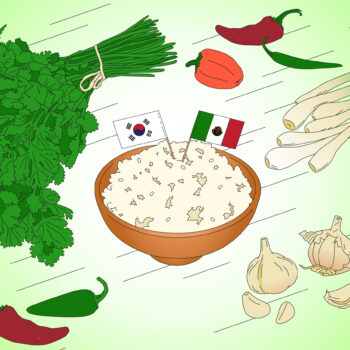Step into the kitchen of a Korean chef and a Mexican chef and it’s likely that many of the same ingredients can be found in their pantries, refrigerators, and lining their spice racks. The two cultures share some very similar and savory flavors in both cuisines. While Mexico City and Seoul, South Korea, are separated by 7,500 miles and a vast Pacific Ocean, it’s evident through their culinary arts that the countries are a lot more connected than it may initially seem. It’s no wonder there are so many Korean and Mexican fusion restaurants that have popped up in recent years. Here are five key ingredients shared in Korean and Mexican dishes, all of which, when paired with an ice-cold Coca-Cola, make for a delectable meal on any occasion.
Chili peppers

Korean and Mexican chefs give some of their dishes a little kick of spiciness by using different types of chili peppers. In Mexican cuisine, some of the most popular chili peppers used for cooking are jalapeños, serranos, and poblanos, which are called anchos when they are dried. In Korean cuisine, some of the peppers used in their dishes are gochugaru, gochujang, and Cheongyang. Each of these peppers have distinct flavors that will heat up any recipe. Be sure to grab a chilly Coca-Cola and cool yourself down.
Rice

Brown and white rice can be found in both Korean and Mexican food. In both cuisines, they can be used as a base for beef, chicken, or fish – or as a side dish. One popular way to cook rice in Mexican food is with onions, garlic, tomatoes, and broth, which is known as arroz rojo (red rice). That’s normally what you’d eat with a traditional Mexican meal. If you’re sitting down for a Korean dinner, rice is usually steamed. It can be found as the foundation of staples like bibimbap, which is topped with meat, veggies, and a fried egg, and served with gochujang sauce.
Garlic

The flavorful cloves can be used in Mexican staples like salsa and to marinate meat for dishes like mole, enchiladas, and tacos. Because garlic is such a versatile plant, you’ll also find it in Korean dishes like jeyuk bokkeum (spicy pork stir fry). A Korean staple dish is maneul jangajji, which is pickled garlic. Cloves of garlic are soaked in vinegar for a few days and then cured in a soy brine. By doing this, the garlic becomes more sweet and less pungent.
Cilantro

Walk into a Mexican chef’s kitchen that doesn’t have cilantro and there’s going to be some issues. The herb can be used to add flavor to everything from salsas to guacamole to charro beans. Depending on one’s taste buds, the flavor can be overwhelming for some, so it’s important to not add too much to some dishes. Korean food, too, benefits from fresh cilantro, although it’s not common as an ingredient as it is in Mexican food. Sometimes Korean chefs will add cilantro as a garnish for bibimbap or different types of sauces, or as one of the main ingredients in Gosu Kimchi (Cilantro Kimchi).
Green Onions

Make sure you have some fresh green onions, or scallions, in your refrigerator if you’re planning on a Mexican or Korean feast. The flavor of the vegetable is perfect for Mexican food like fajitas, tacos, or carne asada. If you’re making a shrimp ceviche, don’t be shy about using green onion to give it some more zing. Green onion is also great in Korean delicacies like Korean pancakes, banchan, kimchi, and jjajangmyeon (noodles in black bean sauce).
If Mexican or Korean food are on your next menu, be sure to grab these essential ingredients – not to mention an ice-cold Coca-Cola – to make it a dining experience to remember.





